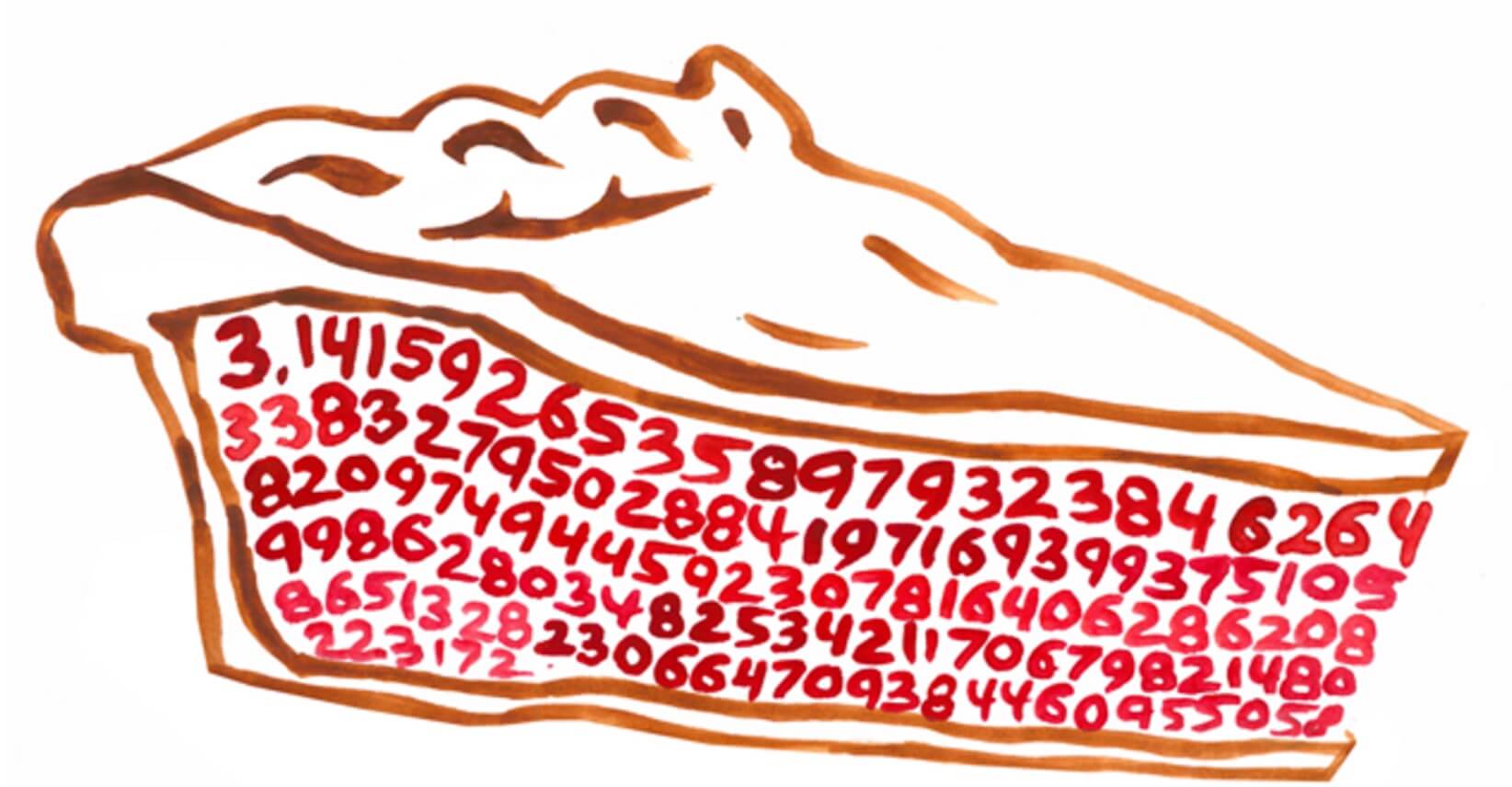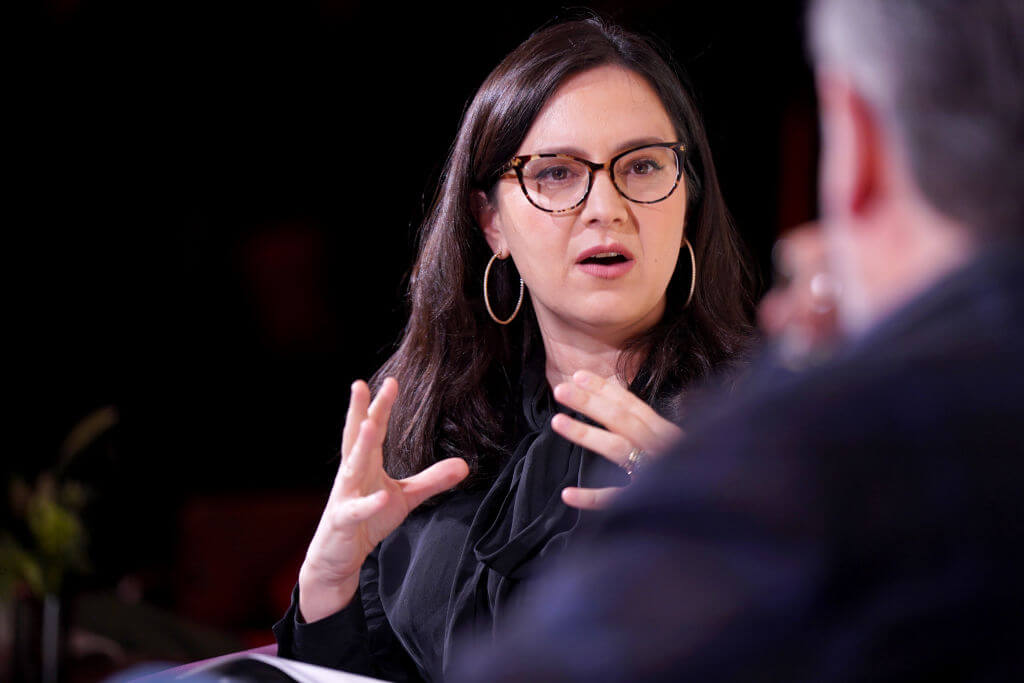The secret Jewish history of pi
The relationship between a circle’s diameter and its circumference was originally mentioned in the Hebrew Book of Kings

According to Maimonides, “The ratio of the diameter of the circle and its circumference are unknown and can never be discussed with accuracy.” Photo by Anya Ulinich
Editor’s note: This story was originally published on March 14, 2021.
In an episode of the original Star Trek, Mr. Spock — played by the late, great Jewish actor Leonard Nimoy — commands an evil computer that has taken over the life support system of the Starship Enterprise to compute pi to the last digit. Spock therefore outwitted the murderous cyborg, which wound up self-destructing, because, as Spock explained, “the value of pi is a transcendental figure without resolution.” Being totally logical, Spock wasn’t suggesting that pi had some sort of spiritual quality of transcendence. Rather, transcendental is a math term, and I’m going to spare you the definition in hopes that you keep reading beyond this paragraph. But in spite of Spock and his logic, pi just may have a spiritual quality of transcendence.
The circumference of a circle is always 3.14 x its diameter. Except 3.14 — what we now call pi — is only an approximation. The decimals actually keep flowing. Pi is not only an irrational number – it’s infinite and ultimately unknowable. Yet while the number itself always evades our grasp, we also know that it’s always true and always reliable. Pi always expresses the mathematical relationship between the diameter and the circumference of a circle, no matter how small or how large the circle.
And we know this not from computations of the digital age. The ancients were onto this from the beginning. Every major civilization had its theories of pi and its mathematicians who tried to explain it. Ancient Egypt and Babylon and India. The Greek Archimedes, the Greco-Roman Ptolemy, the ancient Chinese and Indians — all figured out this ratio, which exists both on paper and, as if by some sort of divine plan, throughout nature.
The relationship between a circle’s diameter — a line running straight through cutting it into two equal halves — and its circumference — the distance around the circle – was originally mentioned in the Hebrew Book of Kings in reference to a ritual pool in King Solomon’s Temple. The relevant verse (1 Kings 7:23) states that the diameter of the pool was ten cubits and the circumference 30 cubits. In other words, the Bible rounds off pi to about three, as if to say that’s good enough for horseshoes and swimming pools.
Later on, the rabbis of the Mishnah and the Talmud, who knew that the one-third ratio wasn’t completely accurate, had a field day with the Bible having played fast and loose with the facts, arguing in their characteristic manner that of course it depended on whether you measured the pool from the inside or the outside of the vessel’s wall. They also had fun with some of the Gematria – the numerical value – of the words in the original passage, which when you play around with them a bit indeed come a lot closer to the value of pi, spelling it out to several decimal points.
The great Maimonides later chimed in on this discussion with what reads almost like a warning not to dig too deeply into the mystery of pi. “The ratio of the diameter of the circle and its circumference are unknown and can never be discussed with accuracy,” he wrote in the 12th century. “This is not a lack of knowledge on our part, as the idiots think, but rather it is that by its nature this thing is unknown, and by virtue of its reality cannot be known, and it is not possible to speak of it … its actual value cannot be perceived.” Inscrutable. Unknowable. Unapproachable. Kind of like God. “No man sees my face and lives,” as He told Moses.
In his 1998 debut feature, “Pi,” filmmaker Darren Aronofsky had some fun with all this when he had a group of Hasidim kidnap his protagonist — a tormented mathematical genius named Max Cohen — in order to help them divine a hidden mathematical code inside the Torah, which they believed would reveal the lost name of God. Instead, Cohen went bonkers and took a power drill to his skull.
Today, Cohen’s real-life avatar is Scottish-born mathematician Jonathan Michael Borwein, the world’s leading expert on the computation of pi, which we can now spell out to about 2.7 trillion decimal points. Borwein is the son of the great Jewish mathematician David Borwein, who was born in 1924, in Kaunas, Lithuania. In 1984, Jonathan Michael Borwein and his brother, Peter Borwein, “produced an iterative algorithm that quadruples the number of digits in each step; and in 1987, one that increases the number of digits five times in each step.” Don’t try that at home.
For a number of years, math geeks have celebrated March 14 – 3/14 – as “Pi Day.” In 2009, they even got the United States House of Representatives to officially support the designation of the day as such. (Apparently the U.S. Senate had more important things to deal with at the time.)
Some Massachusetts Institute of Technology types, or math majors at Princeton University, where Albert Einstein taught, get their jollies over the fact that the great mathematician and Jewish thinker was born on March 14. In the town of Princeton, New Jersey, in addition to pie eating and pi recitations where contestants compete to see who can correctly spell out pi to the greatest extent, there is an annual Einstein look-alike contest. MIT has often mailed its application decision letters to prospective students for delivery on March 14.
For those who get goose bumps just thinking about mathematical coincidences, on March 14, at 9:26:53 a.m. and p.m., the date and time will spell out the first 10 digits of pi (3.141592653). One could even make the case for that same second containing a precise instant corresponding to all of the digits of pi ad infinitum, but you probably shouldn’t think too deeply about that. You may wind up like Max Cohen in “Pi” and take a cordless drill to your skull.
Seth Rogovoy frequently writes about the intersection of popular culture and Jewish themes for the Forward. He flunked high school calculus and writing this article gave him a headache.















